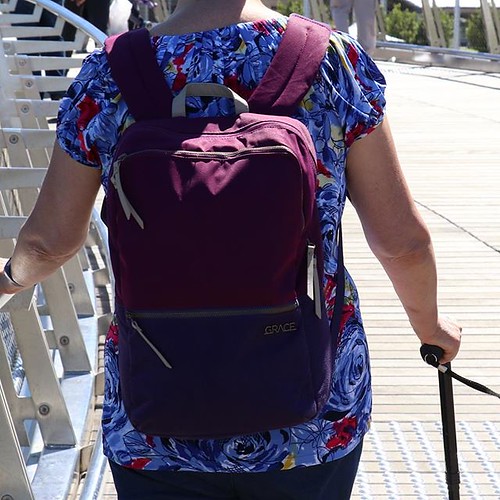), and complement proteins (e.g Ca) by Gproteincoupled receptors (GPCRs) around the surface of your neutrophils that further signal through the cytoskeleton to induce complete activation on the integrins and firm adhesion . Following this firm adhesion, neutrophils crawl perpendicular to and even against the flow from the bloodstream, toward chemotactic (e.g chemokines) or haptotactic (e.g ICAM) gradients. The mechanism of this luminal crawling is strictly ICAMMacdependent , as blockade of those two molecules in vivo resulted in neutrophils failing to both crawl and migrate by way of EC junctions without having affecting neutrophil adhesion. It has been recommended that the transition involving LFAdependent firm adhesion and Macdependent crawling of neutrophils occurs by means of insideout signalling via LFA and also the activation in the guanine exchange aspect Vav that consequently Potassium clavulanate:cellulose (1:1) web activates Mac . Lately, another member of the CAM family, ICAM, has been shown to play a part in neutrophil crawling dynamics toward EC junctions prior to TEM . In mice exhibiting genetic deletion of this molecule at the same time as in WT animals treated with a blocking antibody against ICAM, neutrophils exhibited an PubMed ID:https://www.ncbi.nlm.nih.gov/pubmed/9597349 improve in crawling duration and decreased crawling speed, leading to neutrophils lingering longer along the luminal surface of EC and delaying their migration by means of endothelial junctions. TEM and Its Variations. TEM will be the most speedy response on the migration cascade of neutrophils, lasting min based on the inflammatory scenario. Many molecular interactions among neutrophils and EC have been described for this step within the literature . The penetration of EC by neutrophils happens by way of two routesthrough ECEC intercellular junctions (i.e paracellular migration) or via the body of your EC (i.e transcellular migration). Recent in vivo proof showed the predominance of the paracellular route (of transmigration events) over the transcellular migration . Genetically modified mice in which the adherens junctions and more specific the VEcadherincateninVEPTP complex are stabilized showed that the blood vessel wall became impermeable to macromolecules and neutrophil infiltration By contrast, mice deficient for the actinbinding protein cortactin showed reduced clustering of ICAM about MedChemExpress E-982 adherent neutrophils as a  result of defective activation in the GTPase RhoG in EC leading to strongly decreased adhesion and transmigration Quite a few adhesion molecules enriched at ECEC junctions such as PECAM, JAM family members, ICAM, CD, ESAM, and CDL are involved inside the process of neutrophil TEM. These molecules are also detected in subcellular structures named the lateral border recycling compartment (LBRC) that play a key role in neutrophil TEM In basal circumstances, these adhesion molecules contribute for the upkeep of EC junctions; however, throughout inflammation they engage with their counterreceptors on neutrophils (e.g integrins LFA and Mac and through homophilic interactions of PECAM, JAMA, or CD which might be also expressed on leukocytes) to allow for crossing in the junctions within a sequential manner . The binding of adhesion molecules in between neutrophils and EC can also mediate polarization signals inside the neutrophils permitting them to appropriately migrate in the luminal to abluminal sides on the EC. This can be especially true for JAMA and JAMC . Two recent publications demonstrated in vivo the presence of abnormal transendothelial migratory events , characterized by the neutrophil partially migratin.), and complement proteins (e.g Ca) by Gproteincoupled receptors (GPCRs) on the surface with the neutrophils that additional signal by way of the cytoskeleton to induce complete activation from the integrins and firm adhesion . Following this firm adhesion, neutrophils crawl perpendicular to and even against the flow from the bloodstream, toward chemotactic (e.g chemokines) or haptotactic (e.g ICAM) gradients. The mechanism of this luminal crawling is strictly ICAMMacdependent , as blockade of these two molecules in vivo resulted in neutrophils failing to each crawl and migrate through EC junctions with no affecting neutrophil adhesion. It has been recommended that the transition in between LFAdependent firm adhesion and Macdependent crawling of neutrophils happens via insideout signalling by means of LFA as well as the activation of the guanine exchange factor Vav that consequently activates Mac . Not too long ago, another member from the CAM family members, ICAM, has been shown to play a role in neutrophil crawling dynamics toward EC junctions before TEM . In mice exhibiting genetic deletion of this molecule at the same time as in WT animals treated using a blocking antibody against ICAM, neutrophils exhibited an PubMed ID:https://www.ncbi.nlm.nih.gov/pubmed/9597349 raise in crawling duration and reduced crawling speed, top to neutrophils lingering longer along the luminal surface of EC and delaying their migration by means of endothelial junctions. TEM and Its Variations. TEM could be the most fast response on the migration cascade of neutrophils, lasting min based on the inflammatory situation. Quite a few molecular interactions between neutrophils and EC have already been described for this step within the literature . The penetration of EC by neutrophils happens through two routesthrough ECEC intercellular junctions (i.e paracellular migration) or through the physique of your EC (i.e transcellular migration). Recent in vivo proof showed the predominance of your paracellular route (of transmigration events) over the transcellular migration . Genetically modified mice in which the adherens junctions and more distinct the VEcadherincateninVEPTP complex are stabilized showed that the blood vessel wall became impermeable to macromolecules and neutrophil infiltration
result of defective activation in the GTPase RhoG in EC leading to strongly decreased adhesion and transmigration Quite a few adhesion molecules enriched at ECEC junctions such as PECAM, JAM family members, ICAM, CD, ESAM, and CDL are involved inside the process of neutrophil TEM. These molecules are also detected in subcellular structures named the lateral border recycling compartment (LBRC) that play a key role in neutrophil TEM In basal circumstances, these adhesion molecules contribute for the upkeep of EC junctions; however, throughout inflammation they engage with their counterreceptors on neutrophils (e.g integrins LFA and Mac and through homophilic interactions of PECAM, JAMA, or CD which might be also expressed on leukocytes) to allow for crossing in the junctions within a sequential manner . The binding of adhesion molecules in between neutrophils and EC can also mediate polarization signals inside the neutrophils permitting them to appropriately migrate in the luminal to abluminal sides on the EC. This can be especially true for JAMA and JAMC . Two recent publications demonstrated in vivo the presence of abnormal transendothelial migratory events , characterized by the neutrophil partially migratin.), and complement proteins (e.g Ca) by Gproteincoupled receptors (GPCRs) on the surface with the neutrophils that additional signal by way of the cytoskeleton to induce complete activation from the integrins and firm adhesion . Following this firm adhesion, neutrophils crawl perpendicular to and even against the flow from the bloodstream, toward chemotactic (e.g chemokines) or haptotactic (e.g ICAM) gradients. The mechanism of this luminal crawling is strictly ICAMMacdependent , as blockade of these two molecules in vivo resulted in neutrophils failing to each crawl and migrate through EC junctions with no affecting neutrophil adhesion. It has been recommended that the transition in between LFAdependent firm adhesion and Macdependent crawling of neutrophils happens via insideout signalling by means of LFA as well as the activation of the guanine exchange factor Vav that consequently activates Mac . Not too long ago, another member from the CAM family members, ICAM, has been shown to play a role in neutrophil crawling dynamics toward EC junctions before TEM . In mice exhibiting genetic deletion of this molecule at the same time as in WT animals treated using a blocking antibody against ICAM, neutrophils exhibited an PubMed ID:https://www.ncbi.nlm.nih.gov/pubmed/9597349 raise in crawling duration and reduced crawling speed, top to neutrophils lingering longer along the luminal surface of EC and delaying their migration by means of endothelial junctions. TEM and Its Variations. TEM could be the most fast response on the migration cascade of neutrophils, lasting min based on the inflammatory situation. Quite a few molecular interactions between neutrophils and EC have already been described for this step within the literature . The penetration of EC by neutrophils happens through two routesthrough ECEC intercellular junctions (i.e paracellular migration) or through the physique of your EC (i.e transcellular migration). Recent in vivo proof showed the predominance of your paracellular route (of transmigration events) over the transcellular migration . Genetically modified mice in which the adherens junctions and more distinct the VEcadherincateninVEPTP complex are stabilized showed that the blood vessel wall became impermeable to macromolecules and neutrophil infiltration  By contrast, mice deficient for the actinbinding protein cortactin showed decreased clustering of ICAM about adherent neutrophils due to defective activation from the GTPase RhoG in EC top to strongly reduced adhesion and transmigration Several adhesion molecules enriched at ECEC junctions which include PECAM, JAM family members, ICAM, CD, ESAM, and CDL are involved inside the procedure of neutrophil TEM. These molecules are also detected in subcellular structures named the lateral border recycling compartment (LBRC) that play a key part in neutrophil TEM In basal conditions, these adhesion molecules contribute for the maintenance of EC junctions; however, throughout inflammation they engage with their counterreceptors on neutrophils (e.g integrins LFA and Mac and via homophilic interactions of PECAM, JAMA, or CD which are also expressed on leukocytes) to enable for crossing of your junctions in a sequential manner . The binding of adhesion molecules in between neutrophils and EC can also mediate polarization signals within the neutrophils enabling them to appropriately migrate from the luminal to abluminal sides in the EC. This is particularly accurate for JAMA and JAMC . Two current publications demonstrated in vivo the presence of abnormal transendothelial migratory events , characterized by the neutrophil partially migratin.
By contrast, mice deficient for the actinbinding protein cortactin showed decreased clustering of ICAM about adherent neutrophils due to defective activation from the GTPase RhoG in EC top to strongly reduced adhesion and transmigration Several adhesion molecules enriched at ECEC junctions which include PECAM, JAM family members, ICAM, CD, ESAM, and CDL are involved inside the procedure of neutrophil TEM. These molecules are also detected in subcellular structures named the lateral border recycling compartment (LBRC) that play a key part in neutrophil TEM In basal conditions, these adhesion molecules contribute for the maintenance of EC junctions; however, throughout inflammation they engage with their counterreceptors on neutrophils (e.g integrins LFA and Mac and via homophilic interactions of PECAM, JAMA, or CD which are also expressed on leukocytes) to enable for crossing of your junctions in a sequential manner . The binding of adhesion molecules in between neutrophils and EC can also mediate polarization signals within the neutrophils enabling them to appropriately migrate from the luminal to abluminal sides in the EC. This is particularly accurate for JAMA and JAMC . Two current publications demonstrated in vivo the presence of abnormal transendothelial migratory events , characterized by the neutrophil partially migratin.
